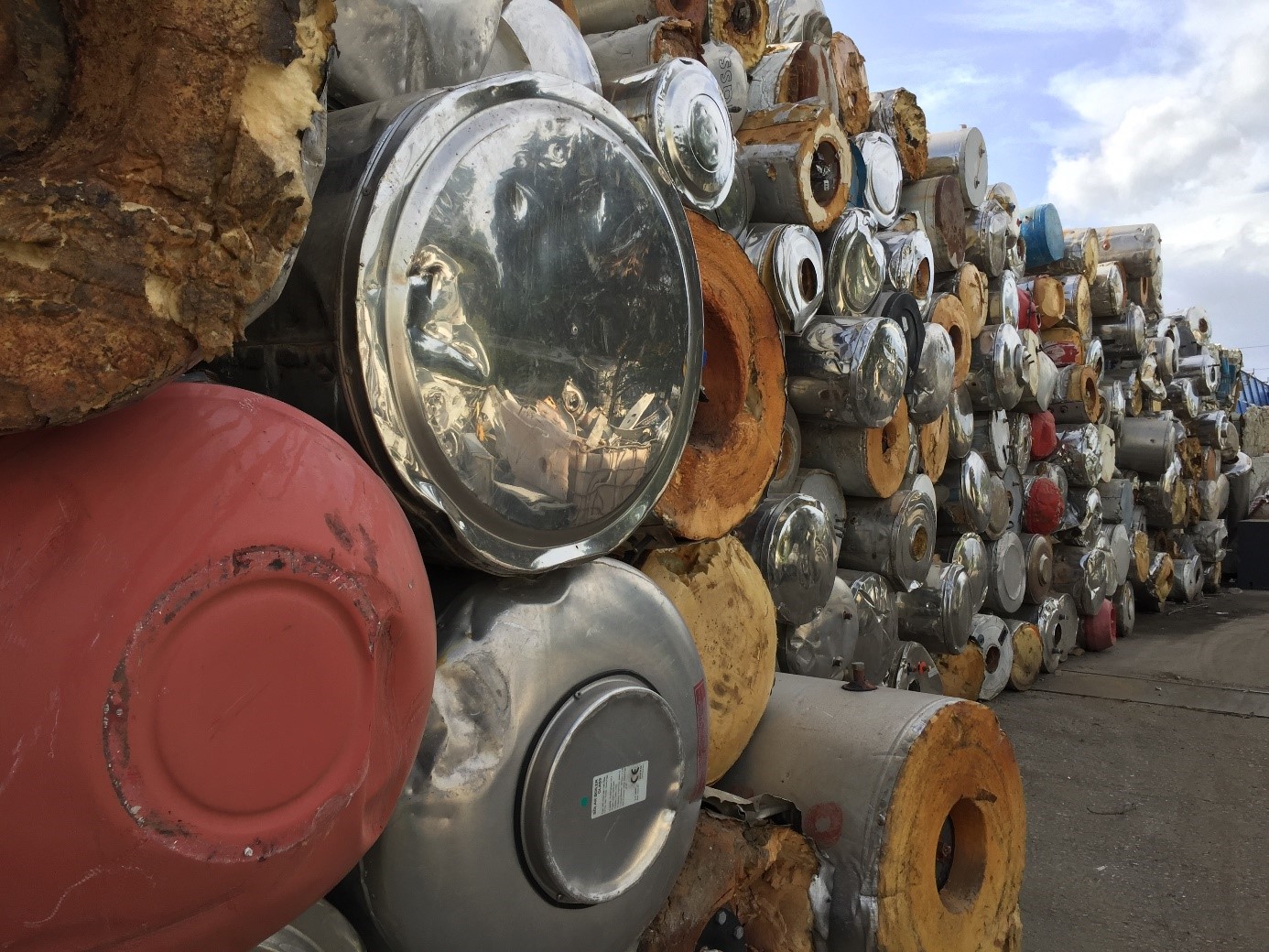
The study, which was published at the end of July 2020, highlights the fact that most boilers and hot-water storage tanks are simply shredded in a non-encapsulated car shredder, which means that the treatment process fails to meet statutory environmental standards.
The question of what constitutes proper treatment of end-of-life boilers has long been a matter of debate among waste management experts around the world. To ensure that future discussion of this matter can build on a reliable factual base, the RAL Quality Assurance Association commissioned the Öko-Institut e.V. (Darmstadt, Germany) to undertake a comprehensive assessment of current waste management practices in this area.
As part of their research project, the team from the Öko-Institut gathered data from treatment companies on the sources, onward destinations, composition and quantities of boilers and hot-water storage tanks that were received for treatment. Of the many questions that the study sought to address, one of particular importance was determining the types of insulation materials contained in these appliances.
The results of the Öko-Institut study underscore the urgency of finding an environmentally sustainable and climate-compatible solution to this problem – not only in Germany but in all other European countries.
In the summary, which forms part of the final project report, the authors highlight two core areas where it is essential to improve current treatment practices:
- A large percentage of hot-water storage tanks contain polyurethane foam as the insulation material. Up until the mid-1990s these foams were produced using the CFC foam-blowing agent R11. Later, foam manufacturers switched to using cyclopentane or carbon dioxide. According to data provided by waste treatment contractors, the proportion of hot-water storage tanks that contain polyurethane-foam insulation (PU foam) is on average about 66 percent. Other insulation materials used include polyester fleece and expanded polystyrene.
- Failing to remove the insulating foam from a hot-water storage tank prior to treatment contravenes the requirements stipulated in the European Union’s WEEE Directive 2012/19/EU. Disposing of hot-water storage tanks in an open industrial car shredder releases the CFCs and hydrocarbons in the insulation foams directly into the atmosphere, resulting in a significant environmental burden. Any waste disposal process that results in the emission of CFCs into the environment is wholly unacceptable, as these emissions contribute directly to stratospheric ozone depletion and to an increase in greenhouse gas concentrations. In Germany, failure to remove CFCs and hydrocarbons from boilers that are classified as waste electrical equipment is in direct contravention of the German Waste Electrical and Electronic Equipment Act (ElektroG). The requirement to remove CFCs also applies to hot-water storage tanks that are not classified as waste electrical equipment.
At present, boilers and hot-water storage tanks that are classified as waste electrical equipment are regarded as ‘large appliances’ and are separated for treatment in accordance with this classification. However, it would make more sense to treat these units in the specialized treatment plants that already exist for processing end-of-life refrigeration equipment and other so-called ‘temperature exchange equipment’.
The fact that hardly any CFC-containing boilers and hot-water storage tanks are actually being treated in accordance with legal requirement has not only been demonstrated by the Öko-Institut in its study, it has also been confirmed to the RAL Quality Assurance Association by numerous European waste processing companies that operate recycling plants for end-of-life refrigeration and temperature exchange equipment, who have stated that they never or only very rarely receive boilers and hot-water storage tanks for treatment in their specialist plants.
The Öko-Institut study has drawn attention to significant environmental weaknesses in current treatment procedures and there now needs to be urgent discussion of these issues involving all market stakeholders. Finding environmentally sustainable solutions to the treatment of end-of-life boilers and hot-water storage tanks will also require adherence to appropriate quality assurance standards, such as the RAL GZ 729 scheme, which sets out quality standards for the treatment of CFC-blown foam products [https://www.beuth.de/de/technische-regel/ral-gz-729/142071337] and which is therefore of direct relevance to the treatment of foam-insulated boilers and storage tanks.
Copies of the study into the environmentally sustainable and climate-compatible treatment of CFC- and hydrocarbon-containing boilers and hot-water storage tanks can be requested from the RAL Quality Assurance Association.









